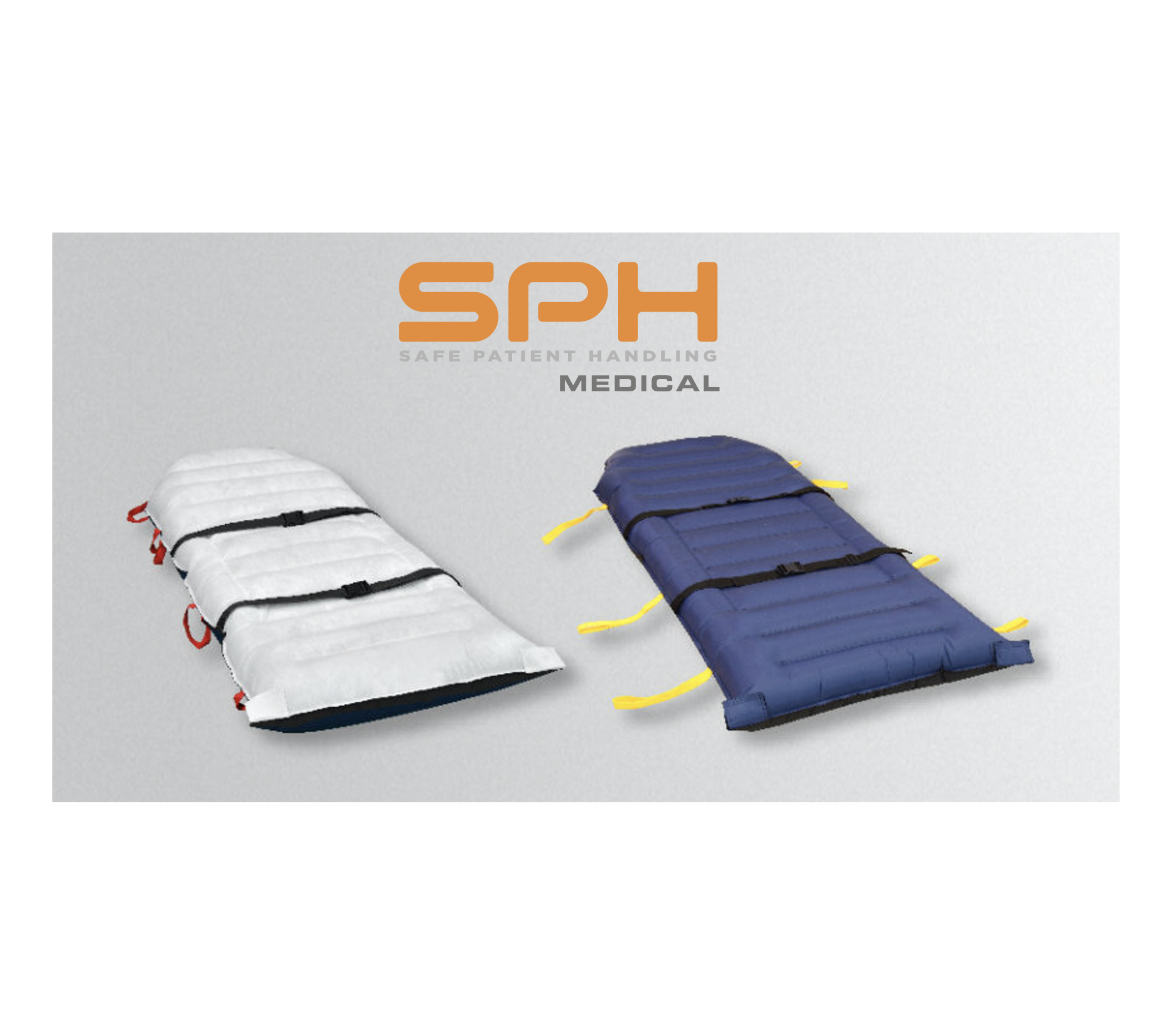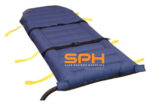Solving Lateral Transfer and Positioning Risk in Hospitals
Nurses, certified nursing assistants, and other healthcare workers constantly move, transfer, and reposition patients and residents during their workdays. Needless to say, the repetitive lifting and moving of people to and from beds, chairs and bathtubs can wreak havoc on caregivers’ health. Today, mechanical lift aids, an air transfer mat and other technologies help reduce the risk of injuries to caregivers and patients alike. However, many facilities continue to transfer and position patients manually, assuming that draw sheets and other methods are safe enough. In reality, lateral transfers cause countless repositioning injuries and other nursing injuries every year.
Increased Risk of Injury from Manual Patient Handling Tasks
Patients and healthcare workers alike are often injured during manual patient handling tasks, including when transferring patients laterally from point to point. According to OSHA, healthcare workers are seven times as likely to develop musculoskeletal disorders than workers in other industries. Per the Bureau of Labor Statistics, healthcare workers face among the highest rates of musculoskeletal injury from overexertion. Across all industries, 33 of every 10,000 workers face such risks; in the healthcare industry, 68 of every 10,000 workers do. Additionally, patients are at increased risk of injury from such transfers and other activities. Every year, approximately 440,000 hospital patients die from hospital errors, injuries, accidents and infections, and Medicare patients have a one in four chance of being injured, harmed or killed after being admitted to the hospital.
Risks to Patients
Total care patients – those who are completely immobile and unable to move– must be moved, transferred and repositioned continually by caregivers. Throughout the day, they may be moved from toilet to chair, chair to bed, bathtub to chair and to and from other areas of a facility. Additionally, such patients must be moved from side to side in bed, lifted back up after slipping down in bed and even moved around while their beds are being made.
Every time a healthcare worker manually transfers a patient, they face an increased risk of being injured. Caregivers must often maneuver them from awkward angles and positions, increasing the risk of mishaps. The process is often uncomfortable for patients at the very least, making them dread any time they must be moved and making life more stressful in general.
Risks to Healthcare Workers
Healthcare workers bear the brunt of the risk of injury when laterally transferring patients without the aid of advanced technologies. Because of the obesity epidemic, patients are larger than ever, further increasing the risk of injury. Manual patient handling tasks contribute to countless injuries and chronic conditions among healthcare workers every year, including sprains, strains and slipped disks. Over time, injuries to the low back and shoulders often develop in those who must repetitively move and transfer patients.
According to research performed by Dr. William Marras of Ohio State’s Spine Research Institute, vertebral discs are avascular and depend upon the vertebrae above and below for nourishment and to remain healthy. Due to overexertion, small microfractures in the vertebral discs develop over time and prevent the disc from receiving the required nourishment. Continued overexertion then may result in a severe or career ending back injury. A seemingly “safe” manual patient handling task like a lateral transfer may just be the proverbial straw that broke the camels back.
Hospitals and other facilities face increased costs because of overexertion and injury among nurses and other healthcare professionals, including disability reimbursements and medical expenses. Injuries from manual patient handling cause higher turnover rates and increased absenteeism among healthcare workers. One study revealed that up to 20% of nurses who leave the industry do so because of the risks they face.
Protect Caregivers and Patients with an Air Transfer Mat
Mechanical solutions for lifting, transferring and repositioning patients are more advanced and readily available than ever. By investing in air-powered lateral transfer devices like and air transfer mat, facilities can dramatically decrease the risk of injuries among healthcare workers and patients. Such devices rely on ergonomics to ensure that they suit workers’ capabilities, reducing strain on their bodies. Mechanical lifts with slings, lifts that assist with standing, mechanical transfer aids and other devices go a long way toward protecting residents and caregivers.
When transferring patients laterally, nurses and other caregivers often pull them from bed to gurney with a draw sheet, or they might pull the patient on a sheet, sliding them across a plastic board. Either way, there’s still too much friction, and injuries can easily occur. Today, air-powered lateral transferring devices are the gold standard for reducing the risk of injuries and other problems. These devices use a thin layer of air beneath an inflated mattress to “float” patients from point to point, making the process easier, safer and more efficient for all.
SPH Medical supplies today’s top air-powered patient transfer solutions, allowing facilities like hospitals to reduce the risk of injuries to patients and healthcare workers. Products like AirPal and HoverMatt significantly reduce the risk of nursing injury and repositioning injury; in turn, employee downtime, absenteeism, disability expenses and other issues decrease, allowing facilities to maintain productivity while keeping costs in check. Today, the CDC recommends one patient lift device per eight immobile patients, and air-powered transfer devices are among the most useful and flexible options. Find one that suits the needs of your facility by shopping SPH Medical today.



